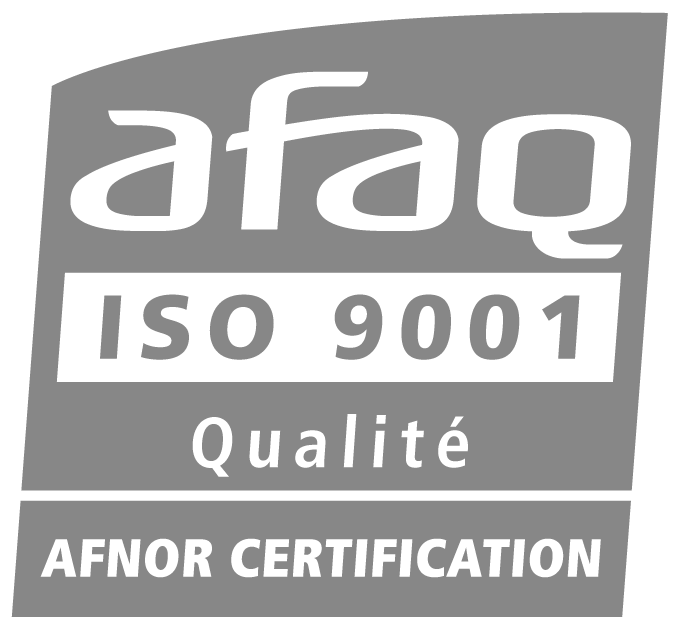Airborne Disinfection : a necessity for pharmaceutical and medical industries
As defined by the French National Agency for Health and Safety (ANSES) in its methodological guide, DSVA can be considered as “an operation with a short-term result that allows to reduce to an acceptable level the contamination of environments or inert surfaces by micro-organisms, according to the objectives set by the risk assessment”.
As such, this operation, essential in the context of certain activities of control of microbiological contamination (mandatory in the context of the operation of biological safety laboratory level 3), must meet certain criteria (set in the EN 17272 standard):
- The use of a biocide reaching regulatory disinfection objectives
- An automatic process enabling diffusion of the biocide in the air
- A homogeneous and global biocide deposition on the surfaces (which implies a saturation of the volume with biocide)
Overview of currently deployed main technologies and solutions
The validation of a DSVA process involves the validation of a machine/product combination, whose effectiveness is approved through certified laboratory testing. The approved combination must then reach logarithmic reductions of microorganisms on all surfaces of the disinfected volume:
- 5 log for bactericidal activity
- 4 log for a fungicidal activity
- 3 log for sporicidal activity
- 2 log for a virucidal activity
Today, most of the formulations used are based on hydrogen peroxide (H2O2), sometimes coupled with peracetic acid, in various mixes and concentrations. In this context, a certain number of biocide/machine combinations are present on the market today:
- Rotating disc (aerosol atomization)
- Pneumatic nebulizer (aerosol atomization)
- H2O2 Vaporizer : autoclaves, VPH… (gas)
- Amplified vibrating mesh nebulizer : Tekceleo’s Micronice Technology (aerosol atomization)
- In this case our P&S 360 kit is already a functional part of a proven machine/biocide combination with hydrogen peroxide and peracetic acid.
- Combination of Dry fog technology and cold fogging. This means that the biocide is sprayed in droplets of range 5 to 12 microns without any temperature or pressure rise.
Amplified vibrating mesh nebulization : a proven technology for biuosafety in pharma and medical environments
The technology developed by Tekceleo, through years of development, is the only actual vibrating mesh technology that can be used for surface disinfection. Indeed, historically vibrating mesh nebulizers are used to generate therapeutic aerosols, and not biocides aerosols, that are much more corrosive. Tekceleo has paved the way for the use of this new method by a patented design (Micronice®), protecting the piezoelectric transducer from the biocide, which is in all cases an oxidizing and/or corrosive liquid.
This design was accompanied by a choice to increase quality of all materials and assembly methods. This has allowed us to design a very high-reliability nozzle in accordance with automated airborne disinfection standards, while keeping the compact and modular aspect of the original technology. As part of its design, our technology has undergone long-term testing in constrained environments and with the most in-used corrosive liquids (H2O2 >30%, peracetic acid >1.5%). Our design and manufacturing processes are ISO 9001 certified.
The introduction of this new technology in the airborne disinfection market makes it easier to control contamination for small volumes:
- Microbiological Safety Cabinet
- Flat pass
- Decontamination sas
- Isolators
- Glove box
- …
These equipment are either subject to constant vigilance regarding the presence of contaminating agents or designed to sterilize. In case of contamination, it is necessary to proceed to a disinfection cycle of the surfaces by air, but for certain laboratories and uses this cycle must be daily or linked to certain regular processes.
Advantages of Micronice® technology for small volume disinfection and biosafety equipment: customizable, easy to integrate, quick to use
This is a microbiological safety issue. In this respect, the technology of nebulization by vibrating membrane brings significant advantages compared to the historical technologies:
- No pressure build-up in the volume to be decontaminated (essential for hermetic volumes).
- Easy integration and adaptability: the nozzle is only 20mm in diameter, plug and play nebulization. This makes the device easy to integrate into a MSC or an isolator, for example.
- This modularity also facilitates maintenance, whether preventive or curative.
- No alteration of the biocide: no heating, pressure build-up or vaporization.
- Homogeneous diffusion, with an adapted and mono-dispersed particle size, whatever the volume nebulized.
- Control of the flow rate and volume of biocide, to the microgram if necessary.
- The very precise management of volumes, coupled with cold nebulization, makes it possible to create particularly short disinfection cycles without the need for a long ventilation time. For example, for the disinfection of a volume of 0.5m3 a 15mn cycle is sufficient, against 1h30 with a hydrogen peroxide vaporization process.
- A simple and low footprint electronic control, which allows the nebulizer to be directly integrated into an automaton.
- Low power consumption and absence of noise, making it a “sleeping” device directly integrated into equipment.
These advantages are significant for the automated and reliable control of contamination in small volumes, whether in laboratory or hospital environments. They are all the more important as all current technologies are either more adapted to large volumes (rotating disc, pressure nebulization…), or subject to significant constraints of use (vaporization):
- Rotating disc: does not allow for a flow control that allows to treat volumes of less than 0.5 m3. Such technology is more difficult to integrate into equipment with restricted spaces or in “sleeping” mode (the disc must be horizontal, placed at the bottom of the volume and accessible for maintenance). This technology cannot, for example, be used in autoclaves or other sterilization chambers, as the atomized volumes would directly create condensation.
- Pneumatic nebulizer: pneumatic technologies put a liquid under pressure to atomize it via a passive nozzle. This pressure, in the context of a hermetic space, can become problematic. Also, it is more difficult to use this type of technology to nebulize micro-volumes, which can quickly induce condensation in addition to the pressure rise of the environment. In addition, the presence of a compressor induces a relatively noisy and bulky central unit.
- Hydrogen peroxide vaporizer: steam sterilization is particularly effective in a controlled environment. Nevertheless, in order to operate in the temperature and pressure rise of the environment, it is necessary to purchase a specific and adapted sterilization chamber. Moreover, this process tends to accelerate the corrosion of certain elements and is not suited for thermosensible components. In the context of airborne disinfection, this often implies opting for complete and integrated systems, where all the elements have been designed for this type of method, which leads to significant additional costs. Vaporization also implies a temperature rise that prevents it from being used on heat-sensitive objects or consumables. The supersaturation of H2O2 induces by this process also requires to be coupled with a long ventilation process in order to reach acceptable levels of H2O2 in the environment (< 1ppm).
Tekceleo’s Micronice®: a technology that simplifies the existing process and brings new operational and economical answers to the biosafety industry
Thus, without replacing existing technologies for certain applications, the deployment of the Micronice® amplified vibrating mesh nebulization technology should facilitate and secure the work in the pharmaceutical industry. Making the disinfection of small volumes easier and more efficient, through the “plug and play” integration of our compact and automated system, is a useful advantage for making the work of these operators safer.




